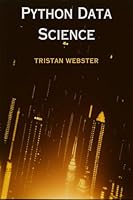
Pi: The Next Generation: A Sourcebook on the Recent History of Pi and Its Computation
- Length: 507 pages
- Edition: 1st ed. 2016
- Language: English
- Publisher: Springer
- Publication Date: 2016-07-20
- ISBN-10: 331932375X
- ISBN-13: 9783319323756
- Sales Rank: #3531566 (See Top 100 Books)
This book contains a compendium of 25 papers published since the 1970s dealing with pi and associated topics of mathematics and computer science. The collection begins with a Foreword by Bruce Berndt. Each contribution is preceded by a brief summary of its content as well as a short key word list indicating how the content relates to others in the collection. The volume includes articles on actual computations of pi, articles on mathematical questions related to pi (e.g., “Is pi normal?”), articles presenting new and often amazing techniques for computing digits of pi (e.g., the “BBP” algorithm for pi, which permits one to compute an arbitrary binary digit of pi without needing to compute any of the digits that came before), papers presenting important fundamental mathematical results relating to pi, and papers presenting new, high-tech techniques for analyzing pi (i.e., new graphical techniques that permit one to visually see if pi and other numbers are “normal”).
This volume is a companion to Pi: A Source Book whose third edition released in 2004. The present collection begins with 2 papers from 1976, published by Eugene Salamin and Richard Brent, which describe “quadratically convergent” algorithms for pi and other basic mathematical functions, derived from some mathematical work of Gauss. Bailey and Borwein hold that these two papers constitute the beginning of the modern era of computational mathematics. This time period (1970s) also corresponds with the introduction of high-performance computer systems (supercomputers), which since that time have increased relentlessly in power, by approximately a factor of 100,000,000, advancing roughly at the same rate as Moore’s Law of semiconductor technology. This book may be of interest to a wide range of mathematical readers; some articles cover more advanced research questions suitable for active researchers in the field, but several are highly accessible to undergraduate mathematics students.
Table of Contents
Chapter 1. Computation of π using arithmetic-geometric mean (1976)
Chapter 2. Fast multiple-precision evaluation of elementary functions (1976)
Chapter 3. The arithmetic-geometric mean of Gauss (1984)
Chapter 4. The arithmetic-geometric mean and fast computation of elementary functions (1984)
Chapter 5. A simplified version of the fast algorithms of Brent and Salamin (1985)
Chapter 6. Is pi normal? (1985)
Chapter 7. The computation of π to 29,360,000 decimal digits using Borweins’ quartically convergent algorithm (1988)
Chapter 8. Gauss, Landen, Ramanujan, the arithmetic-geometric mean, ellipses, π, and the Ladies Diary (1988)
Chapter 9. Vectorization of multiple-precision arithmetic program and 201,326,000 decimal digits of pi calculation (1988)
Chapter 10. Ramanujan and pi (1988)
Chapter 11. Ramanujan, modular equations, and approximations to pi or how to compute one billion digits of pi (1989)
Chapter 12. Pi, Euler numbers, and asymptotic expansions (1989)
Chapter 13. A spigot algorithm for the digits of π (1995)
Chapter 14. On the rapid computation of various polylogarithmic constants (1997)
Chapter 15. Similarities in irrationality proofs for π, ln2, (2), and (3) (2001)
Chapter 16. Unbounded spigot algorithms for the digits of pi (2006)
Chapter 17. Mathematics by experiment: Plausible reasoning in the 21st Century (2008)
Chapter 18. Approximations to π derived from integrals with nonnegative integrands (2009)
Chapter 19. Ramanujan’s series for 1/π: A survey (2009)
Chapter 20. The computation of previously inaccessible digits of π2 and Catalan’s constant (2013)
Chapter 21. Walking on real numbers (2013)
Chapter 22. Birth, growth and computation of pi to ten trillion digits (2013)
Chapter 23. Pi day is upon us again and we still do not know if pi is normal (2014)
Chapter 24. The Life of π (2014)
Chapter 25. I prefer pi: A brief history and anthology of articles in the American Mathematical Monthly (2015)







